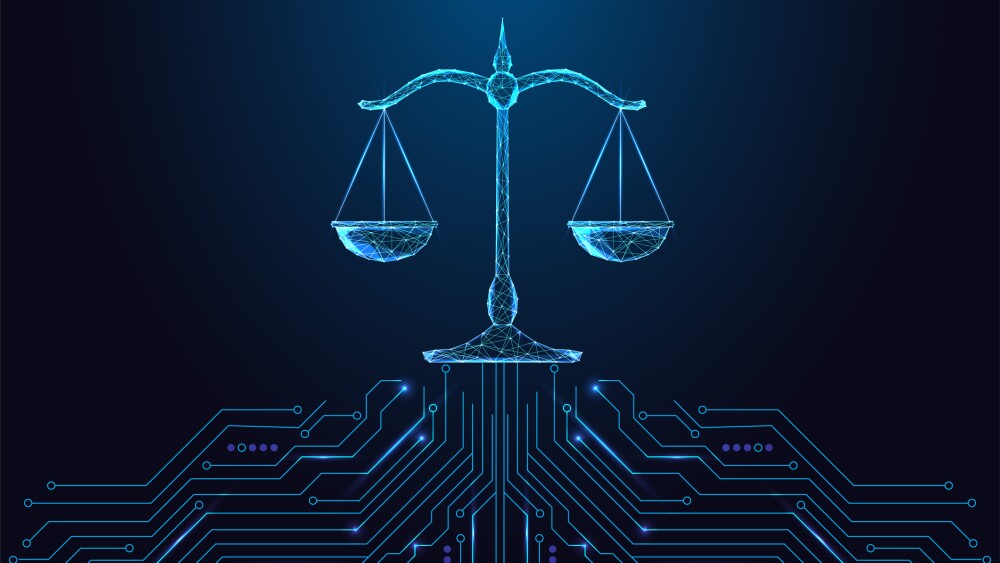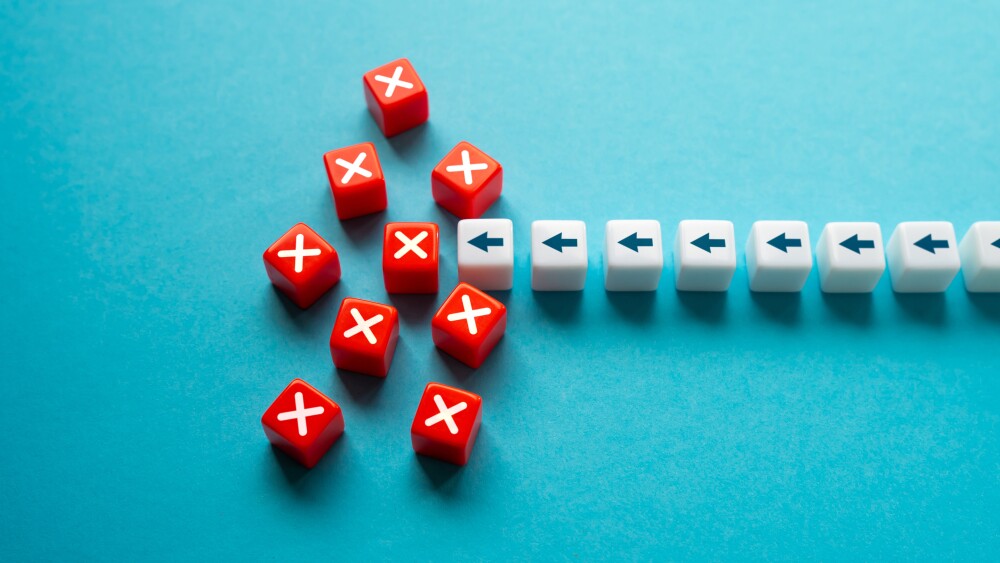Generate:Biomedicines’ Nicole Clouse is one of the key legal minds trying to understand who owns what AI creates. The answers are critical to the future of biotech.
Just as artificial intelligence is evolving to better select new targets and design new drugs, so too are the human minds tasked with protecting those assets. Generate:Biomedicines’ Nicole Clouse is at the forefront of a new area of intellectual property law taking shape in parallel with the rise of AI-powered biotechs.
“You take any specific patent geek question that patent lawyers are going to go off and geek out about [and] this question really boils down to, does the existing IP law framework provide enough bite and enough flexibility to deal with these new, totally novel, factual scenarios that we’re now facing?” Clouse, head of intellectual property at Generate, told BioSpace in an interview. “Or do we maybe need new guidelines?”
Drugmakers have always sought patents for their assets to ensure they are able to reap the market benefits and protect the innovation they have generated through years of lab and clinical testing. But AI is a different beast. Can you patent a drug that was made by a computer? Who owns the data? What needs a patent—the data, the algorithm and the drug? These are questions that people like Clouse are constantly debating, often behind closed doors.
These scenarios are, for now, theoretical. No one has tested an AI-generated biotech patent in court—yet. But lawyers like Clouse are doing everything they can to be prepared. And Clouse thinks the first litigation is going to come sooner than you may think.
Finding a Vacation Spot Vs. Finding a Protein
Clouse’s background is actually in biology, but her career pivoted into IP law in private practice. She argued patent infringement cases in court before entering the biopharma industry as a seasoned IP lawyer. In 2022, Generate lured her from her Big Pharma post at Biogen with some big questions about the future of AI.
“I was completely intrigued, because I realized we were in 2022, just on the cusp of quite a revolution in the way drugs are being developed,” Clouse said. “And necessarily, that was going to invoke some really interesting legal questions and IP issues, and I really wanted to be a part of that.”
Clouse admits that the AI and machine learning models she works so hard to protect are still a bit of a black box to her.
“I’m a student of machine learning, slowly recognizing that I’m never going to be an expert. I’m going to know just enough to be dangerous,” she said.
But what Clouse does know is that biotech needs a policy solution for AI that is not one size fits all. She’s been pleased to see the U.S. Patent and Trademark Office and Congress holding hearings and collecting public comment to inform future policy. While the Trump administration has yet to stake out a clear position on the issue, Clouse and her peers in the industry are keeping up the noise to ensure that biopharma is heard.
“I am nervous about broad, sweeping, reactionary, fear-prompted guidelines and regulations getting put into place that are going to actually then hamper innovation,” Clouse said.
Because what biopharma is doing isn’t your grandma’s AI.
“The way that we use AI at Generate it’s really a totally different ballgame from what my parents might [do]: sit down and ask ChatGPT, Where’s a good vacation spot?” Clouse said.
Generate is developing its own in-house proprietary machine learning models to develop new protein drugs. Then computational biologists bridge the gap between computer science and biology, working with the biologists with intimate knowledge of the disease space to target the right pathways in the right way.
“It takes exceedingly high levels of expertise in order to do this really well,” Clouse said. “I really think of [ChatGPT and other popular AI models] in a completely different bucket from the machine learning models that our scientists have developed and have trained.” And it’s Clouse’s job to protect those models, which themselves are quickly evolving.
“Our brilliant scientists, as soon as I sort of wrap my head around what one iteration of the model is doing, they’ve already improved it,” Clouse said. “So the patent is arguably not the best form of protection for those models that do change so fast—they change faster than it would take to get a patent.”
Patent Lockdown
The swift revolution of AI has been marked with democratization and an openness to providing public access to the tools. That’s a stark difference from the world of biopharma, where data and other assets have historically been kept close to the vest until they’re ready for prime time. Clouse works with Generate’s scientists to bridge those two ideas.
“Coming from pharma, it’s just such a different cultural environment,” she said. “The way the computer scientists think about things, they want to put everything in GitHub, and they want everyone in the community to engage with it and make it better.”
An example of this in action is when Generate published one of its generative models called Chroma, a machine learning tool that generates new protein molecules based on geometric and functional programming instructions. It was the first time a company had put a machine learning model of this type out into the word, according to Clouse.
“We had a sense that there were other people working on these problems, and that if we did not establish our stake in the ground and establish ourselves as a leader in the space, that an important moment might pass us by,” she explained.
Generate filed for patent protection of Chroma, published it and made the code available.
“The most rigid sort of attorney-like approach that an IP lawyer can take is to always think in a very conservative fashion of ‘Lockdown. Lockdown,’” Clouse said.
But there’s nothing traditional about the waters that Clouse is treading in right now with AI. So her team is filing for patents as they normally would for the molecules they’re taking into the clinic but being more open on the machine learning side to what scientists think.
“We understand that while certainly keeping information secret protects us in some ways, that there could be competing interests that would not be served by keeping 100% of our approaches completely locked down,” she said.
Clouse and her peers in the industry still have a big patent question to answer: “If an AI tool makes it, is it really something that was invented by a human?” Because that is the standard for a patent, she explained.
While the big test that needs to happen to set the record straight is a court case, Clouse said, she believes the existing patent framework clearly provides protection. She doesn’t believe that something developed with an AI tool should be any different. She likens AI to the use of mice to develop antibodies, where you’d inject the mouse with a protein sample, then its immune system would do the work of developing antibodies that would then be tested in hopes of finding one that is effective.
“No one has ever thought that those antibodies shouldn’t be protectable simply because the mouse is the one who kind of made the sequence,” Clouse explained. “Everyone has always viewed the mouse as a tool. AI models are just much, much, much better mice.”








